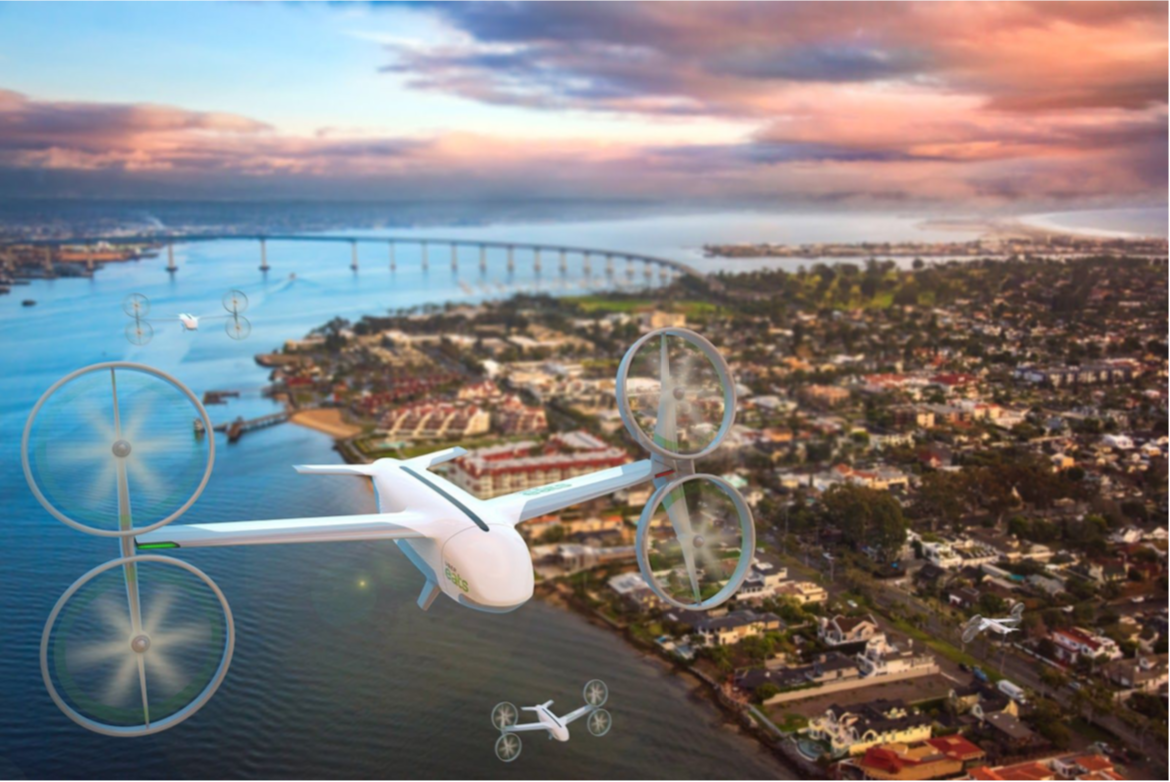Back to basics: The highflying visions of Uber Eats and what the restaurant partners really want

UberEats executives, huge global players in the food and beverage industry—including Coca-Cola, Burger King, Baskin Robbins, Guzman y Gomez, Chai Time and Black Sheep Restaurant—and a cluster of media, huddled together inside an industrial factory space located in Kowloon.
An albatross of a drone flew overhead and giant green LED UberEats signs adorned the walls. It was exciting to be there, in an UberEats sort of way, to listen about the future of our food and beverage industry.
There have been two seismic shifts in how people consume food, according to Raj Beri, regional head of UberEats, who declared at the beginning of the event: “If we look back forty years ago, the majority of meals were consumed at homes – most people were cooking at home – then in the eighties there was a rise in quick, casual restaurants. People realised that eating out didn’t have to be a luxury, it became much more accessible.
“There was a seismic shift in how people consumed food.”

Now, he says, another seismic shift is unfolding. People are valuing convenience, but they also want quality, selection, and affordability. These traits fit perfectly inside the UberEats model, which captures the modern consumer that demands food deliveries at their home, at work, or in the park.
The shifts towards convenience are fast and aggressive, whereby according to a Deloitte report on future food trends, technology-enabled delivery – for groceries, prepared meals, and ready to eat meals – has increased dramatically over the last decade, causing a lot more food being prepared outside of the home, as more businesses enable food delivery services.
UberEats — being the largest delivery service in the world, outside of China — is obviously well-positioned to play a big hand in this shift towards delivery.
Beri emphasised its power when he shared the growth of UberEats in the APAC region.
“We grew from 29 to 75 cities in 2018 alone, and today we partner with over 71,000 active restaurants in APAC.”
This relentless pursuit to give consumers what they want, where and when they want it has driven all sorts of innovation.
Globally, there is an increasing number of ‘dark restaurants’ — places that only produce food for delivery to its customers on an app — wherein China, a growing number of warehouses and apartment blocks are being turned into dispatch centers for food-delivery businesses.
These digital businesses eliminate the most costly parts of running a restaurant, which is, well, running a restaurant. And some believe it could become a mainstream alternative to the traditional brick-and-mortar model of restaurants.
The proliferation of ‘ghost restaurants’ has hit New Zealand, too. Over the past year, 53 virtual restaurants have popped up across the country, as restaurants seek to harness new opportunities in the convoluted food industry.
Further innovation could see UberEats form ‘hyper-customised’ food recommendations to its users — similar to Netflix offering personalised movie recommendations — where the delivery company collates deep detailed analysis about the individual, and the food itself, to give precise offerings for its user.
Another interesting area was the developments in aviation and drone technology. During the event, UberEats sent out a media release, announcing its first commercial application of drone delivery service in San Diego, which is powered by the technology of Uber Elevate. It will, according to the release, expand customers’ culinary options and decrease delivery times.
Although dark restaurants, customised dietary plans, and drone delivery feel like big strides in food tech, these are only nascent examples of innovation within food delivery across the globe. It’s only just the beginning, according to UberEats executives, who claim UberEats is at a similar stage to the flip-top phone back in the early 2000s.
The restaurant partners vision:
These gloom-defying visions on the future of food delivery are certainly compelling, however, some restaurant partners felt as though UberEats had missed the point.
Kelly Bain, director of restaurant Bird on a Wire, a restaurant partner with UberEats, also attended the event in Hong Kong.
“Overall, I’d rate the event a five or six out of ten. It felt a bit disorganised and fragmented,” she said. “There was a lot of talk about the three-sided partnership but there was an obvious gap at the summit – there were no delivery partners present. It was obviously heavily-weighted towards promoting UberEats which you would expect since they paid for the event.”

Prior to the event, Bain told the National Business Review that she considered dumping UberEats after discovering its costly commission prices—ranging from 30 to 35 percent—of which chewed a significant chunk of its costs.
Bain felt there was an opportunity for UberEats to address this topic at the event, saying it needed to be talked about but wasn’t.
“The elephant in the room [which is the very high commission rates], just wasn’t talked about and it felt like it was purposefully avoided. Ultimately the profitability of the restaurant is the only thing that keeps the beast alive, and if restaurants aren’t making money then they will not survive. It’s as simple as that.”
Bain says, she was looking forward to seeing a presentation on how UberEats can be profitable for her business — because it currently isn’t — but it never came.
“The numbers are simple. For every dollar you make, thirty cents is the cost of goods, in a perfect world thirty cents is your labour cost and thirty cents is fixed costs, leaving 10 cents profit. If UberEats takes 30 cents, there is literally nothing left.”
However, issues extended beyond the commission debacle. Other concerns include the unwieldy control UberEats has over its app, where it can turn restaurants on or off its platform, depending on the availability of its drivers.
Since Bain returned from Hong Kong, she discovered UberEats made her restaurant ‘invisible’ on its platform, which has, once again, left her reconsidering the partnership with UberEats.
“The day after I returned from Hong Kong, we were sitting in our office in Grafton, ordering Uber Eats from our own restaurant, and both of our restaurants that are within a 5km radius, and usually available, were offline.
“The delivery radius at two of our restaurants had been manipulated by UberEats without telling us.”
It’s not the first time UberEats has waved the magic wand on its restaurant partners.
The first ‘dark restaurant’ in Australia, On It Burger, fell dramatically from UberEats’ star performer, raking in $32,000 a week, to leaving its founder broke and $730,000 in debt, according to an Australian news website.
The problem is, in some cases, restaurants are being punished for their success. The popularity of On It Burger, or Bird on a Wire, meant the restaurants were sucking the availability of UberEats drivers, causing the delivery radius to be changed, or worse, to be turned off the system.
“I’ve asked them what is happening, but I suspect during surge times when drivers are getting pulled in different directions, they are turning off restaurants that are either drawing too many resources, or aren’t popular.
Bain says, on a personal level, she gets along very well with her UberEats account manager and is usually very approachable, but on this occasion, she hasn’t received a response.
“It’s a big concern because they are a third party, they have significant control over your business. If they choose to turn you off they could harm 30 percent of your audience.”
Asked if it was exciting to hear the visions of UberEats executives on the future of food delivery, Kelly plainly stated, “no it didn’t excite me”.
“Sending more of my customers to UberEats doesn’t excite me, show me how to make some money for the ones that are already there. I can’t see it ever happening, I can’t see drones flying around the city delivering pizzas, but no it doesn’t excite me at all.”
Another key challenge for UberEats and its delivery partners is to retain the quality of the food when it is being delivered. At the event, Lara Thom, chief marketing officer at Guzman y Gomez, announced it remained a huge hole in the market.
Despite UberEats working to improve its delivery product, Bain says, she is yet to see any changes.
Bain says a key outtake for was that UberEats drivers are down by contract to use a green thermo bag, but has never seen one so questioned a presentation about product quality and integrity, and putting the onus on the restaurant to ensure quality to make sure it’s packaged properly.
“When an Uber turns up without their thermal bag, they are the ones who are having the most negative impact on the product.
“The Uber Drivers are meant to have the green thermal bags. But I have never seen one. When it comes to product integrity the drivers need to take responsibility for that.”
So, while many trends suggest a more convenient, delivery-based, future of food, seeing the pervasion of dark restaurants, data, and new technologies in drone delivery, along with many other promised inventions by UberEats, restaurants remain concerned about the fundamental operations of its giant deliver partner.




